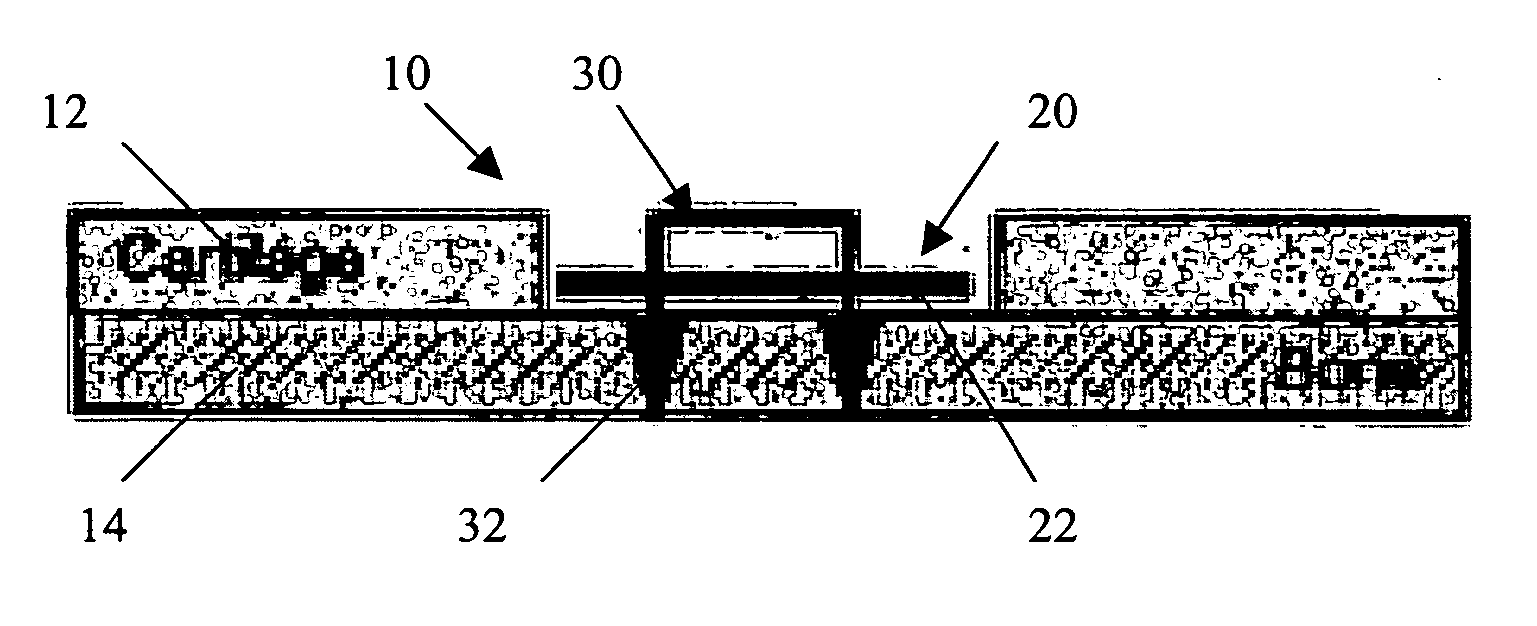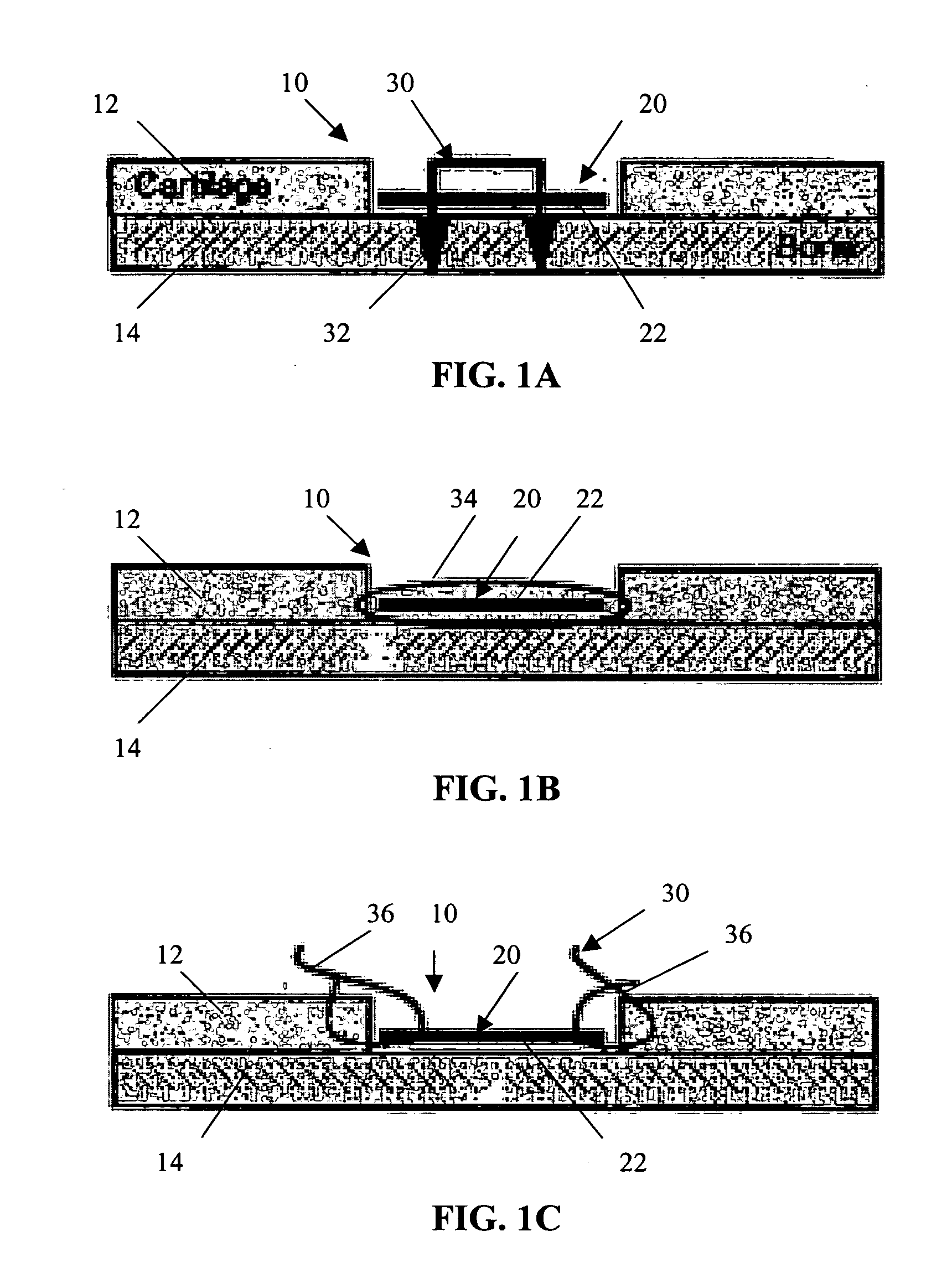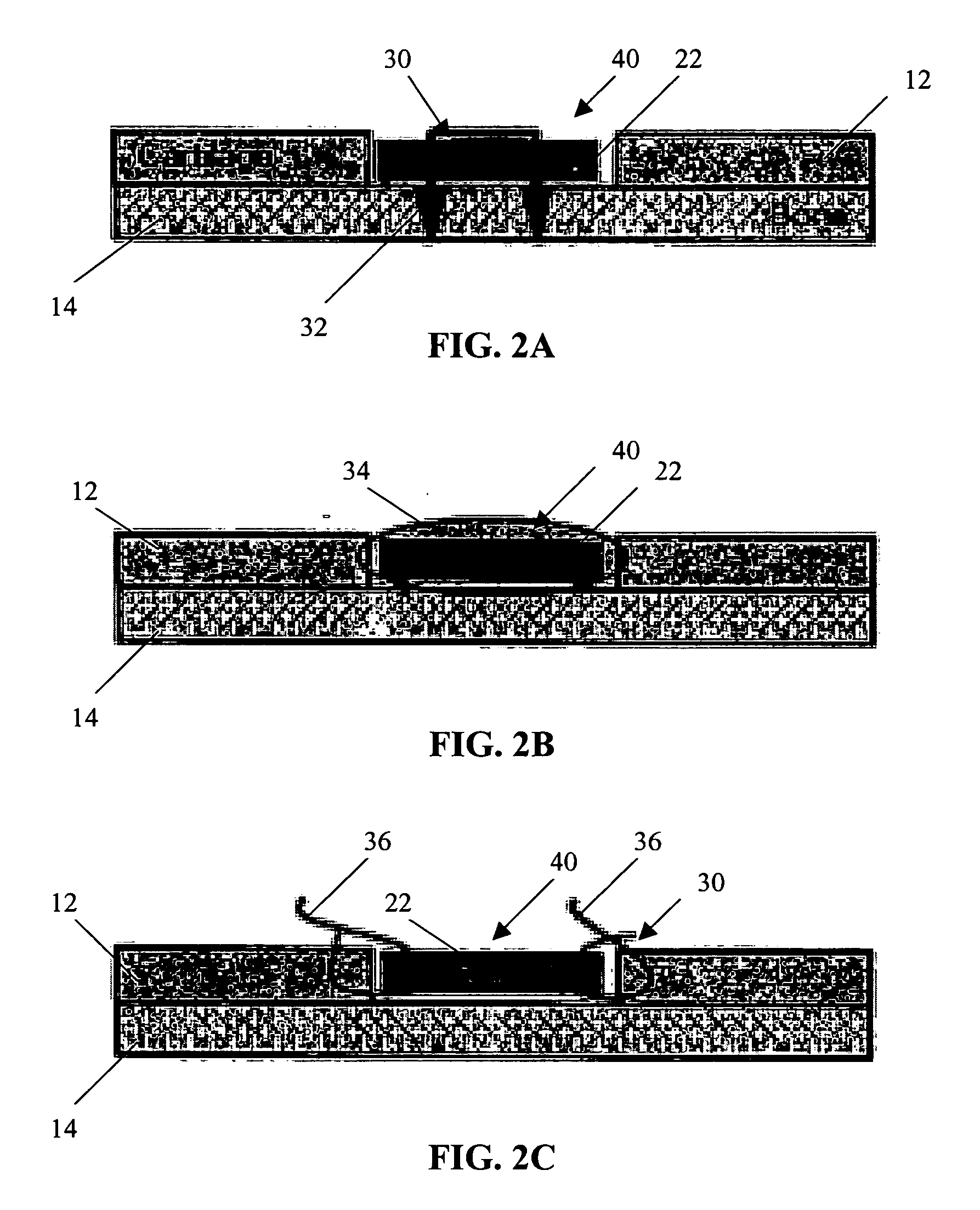Viable tissue repair implants and methods of use
a tissue repair and implant technology, applied in the field of tissue repair and implant augmentation, can solve the problems of inconvenient use, inconvenient use, and high labor intensity, and achieve the effects of reducing manipulation time, repairing tissue injury or defect at minimal cost, and without cell isolation and amplification
- Summary
- Abstract
- Description
- Claims
- Application Information
AI Technical Summary
Benefits of technology
Problems solved by technology
Method used
Image
Examples
example 1
[0116] In this in vitro study, cellular migration and new matrix formation from minced and shredded bovine anterior cruciate ligament (ACL) tissue into non-woven tissue scaffold (PANACRYL) was evaluated and compared. Pre-scored and sterilized PANACRYL non-woven sheets were trimmed to yield two (2) 2.5×2 cm sheets. Next, bovine ACL tissue samples were obtained from two knees from the same animal. To prepare the shredded tissue, an isolated section of the bovine ACL was trimmed under aseptic conditions to measure approximately 2×2×0.5 cm in overall dimensions. Using a sterile scalpel, multiple full thick incisions were made parallel to the fibers of the ACL section, yielding tissue strands measuring approximately 2 cm in length and 0.1 cm in maximum diameter. The tissue strands were placed parallel to the long axis of a PANACRYL sheet to form a composite implant. To prepare the control, minced ACL tissue fragments were also applied to a sheet of PANACRYL. The minced tissue fragments w...
example 2
[0126] In this in vitro study, sliced meniscal tissue was tested as a source of viable cells for meniscal regeneration. First, an isolated bovine meniscus was obtained and trimmed to remove the surrounding synovium. Using a sterile dermatome, slices of meniscus were removed. The thickness of the slices were either 200 μm, 300 μm or 500 μm. The slices were approximately 1 to 2 cm in length. The meniscal slices were seeded onto scaffolds comprising sterilized, 65:35 polyglycolic acid / poly caprolactone acide foam reinforced with polydioxone mesh at a density of 20 mg / cm2. The scaffolds measured 4×2.5 cm. Platelet rich plasma (PRP) was added to the scaffolds at a concentration of 20 μl / cm2 and the scaffolds cultured for 3 and 5 weeks in Dulbecco's modified eagles medium (DMEM) supplemented with 0.5% fetal bovine serum (FBS). After 3 and 5 weeks, the samples were prepared for histological evaluation. Sections of the samples were obtained and stained with hematoxylin and eosin.
[0127] Res...
example 3
[0131] In this in vitro study, minced tissue fragments were used in conjunction with mosaicplasty techniques to demonstrate that better integration between cartilage plugs can be achieved and cartilage repair of damaged tissue can be enhanced by the addition of minced cartilage fragments.
[0132] Healthy articular cartilage was obtained from bovine stifle. A 3 mm biopsy punch was used to punch cylinders or plugs of cartilage tissue. The rest of the cartilage tissue, which was substantially free of bone, was minced using scalpel blades to obtain small tissue fragments. The size of the tissue fragments varied but was less than or equal to 1×1 mm in dimension. Four 3 mm cartilage cylinders were placed together in parallel to each other longitudinally in a glass cylinder with an inner diameter of 8 mm. In one group, a blood clot was then formed inside the glass cylinder to keep the tissues together. In another group, the minced cartilage tissue was placed in the glass cylinder with four ...
PUM
 Login to View More
Login to View More Abstract
Description
Claims
Application Information
 Login to View More
Login to View More - R&D
- Intellectual Property
- Life Sciences
- Materials
- Tech Scout
- Unparalleled Data Quality
- Higher Quality Content
- 60% Fewer Hallucinations
Browse by: Latest US Patents, China's latest patents, Technical Efficacy Thesaurus, Application Domain, Technology Topic, Popular Technical Reports.
© 2025 PatSnap. All rights reserved.Legal|Privacy policy|Modern Slavery Act Transparency Statement|Sitemap|About US| Contact US: help@patsnap.com



